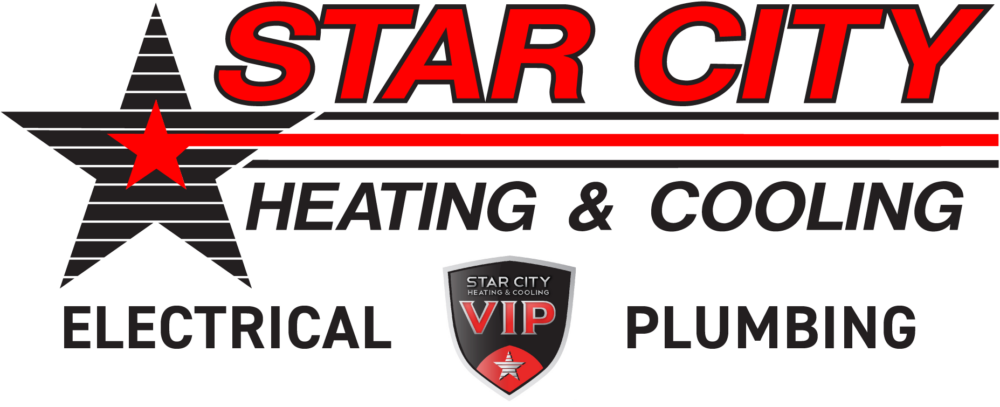Nebraska gets chilly in the wintertime—but that’s what your furnace is for! The challenge for many Lincoln homeowners is to recognize common furnace problems and fix them before they have a chance to become serious inconveniences or costly emergencies.
That’s where Star City’s expert home comfort team comes in. We’ve performed furnace repairs throughout Lincoln, NE and the surrounding areas, so we know all about the things that are most likely to go wrong with your heating system and the best ways to address them. Read on to spot the signs of an impending furnace failure and know when to tackle them yourself or call our professionals for help.
What Are the Most Common Furnace Problems in Nebraska?
Homeowners in Nebraska encounter a few common issues with their furnaces—including frequent cycling, ignition problems, and poor air quality. These issues can result from typical wear and tear, but they’re often exacerbated by the harsh Nebraska winters, which can cause furnaces to work extra hard during the year’s coldest months.
Frequent Cycling
Cycling between “On” and “Off” more often than usual can be a clear sign that your furnace isn’t functioning properly. Causes might include:
- A clogged filter
- Improper air circulation caused by a blocked or leaky duct
- A faulty thermostat
Can You Fix It Yourself?
If the issue is your air filter, it’s an easy fix—just clean the filter (if it’s reusable) or swap it out (if it’s disposable). However, if the issue is due to a faulty thermostat, it’s best to hire a professional. While you can change the batteries and adjust the settings yourself, calibrating a thermostat can be a complex process that’s best performed by pros.
The same goes for leaking or blocked ducts. While you can probably remove debris from your vents without too much trouble, accessing the interior of your ductwork is difficult (and can void your warranty if not done properly). Call us for duct cleaning and enjoy peace of mind knowing our team is on the job.
Ignition Problems
If your furnace fails to kick on (or starts and then shuts off abruptly), a faulty igniter could be the culprit. This is often caused by normal use over long periods of time, but a sudden power surge can also damage the igniter. In older furnaces with pilot lights, you might also notice the flame burning yellow or orange instead of blue—this could indicate a problem with your air intake valve.
Can You Fix It Yourself?
Nope; this requires professional furnace repairs. Igniters and intake valves are delicate components that require careful installation. Tampering with your igniter can not only void your furnace’s warranty, but can also create an electrical or fire hazard depending on the type of furnace you have.
Poor Air Quality
If the furnace seems to be running but your air smells strange, the air filter may be clogged. You might also notice that your house doesn’t seem to be getting warm fast enough for the amount of work the furnace is doing.
That’s because dust, debris, and allergens can build up on the filter over time, impeding airflow and making the furnace work harder. Ignoring this can accelerate wear and tear on your furnace’s components and drive up your utility bills each month.
Can You Fix It Yourself?
Fortunately, replacing or cleaning a furnace filter is easy! All you need to do is rinse your filter with cold water if it’s reusable or replace it with a new one if it’s not.
Furnace Safety Precautions for Nebraska Homeowners
Safety is paramount when dealing with furnaces. Here are some steps you can take to prevent carbon monoxide poisoning and gas leaks.
- Install carbon monoxide detectors near every sleeping area in your home and check the batteries twice a year.
- Schedule regular professional furnace maintenance and inspections. Our team knows how to spot the signs of a carbon monoxide or gas leak and keep you safe.
- Ensure your furnace has adequate ventilation. A properly vented furnace reduces the risk of carbon monoxide buildup.
DIY Furnace Maintenance Tasks
Maintenance keeps your furnace functioning efficiently over the course of its lifespan and reduces the likelihood of high heating bills or emergency breakdowns. Here are a few things you can do by yourself to keep your furnace in good working condition:
- Change or clean your filter each month during the heating season.
- Keep the area around the furnace clean and unobstructed to ensure proper air circulation.
- Check the thermostat batteries and make sure it’s functioning correctly. This can be done by comparing the temperature it shows to the results of a separate room thermometer.
Professional Maintenance Tasks
Not all furnace maintenance is safe or practical for you to perform on your own. Here are a few tasks that should only be performed by a professional due to their complexity and associated risks:
- Checking for leaks in ductwork
- Inspecting the heat exchanger for cracks
- Working with the blower motor
- Adjusting electrical wiring
- Anything to do with your furnace’s igniter, fuel source, or air intake valves
For best results, schedule professional furnace maintenance at least once each year before you start using your heating equipment during the cooling season.
Additional Resources
The more you learn about your furnace, the easier it is to recognize common problems and get the help you need fast. You can also learn about incentives to purchase new heating equipment so you can enjoy better home heating throughout each winter. Try the following:
- The U.S. Department of Energy offers an energy efficiency guide for furnaces.
- The Energy Star program offers various tax credits for new oil and natural gas furnaces.
- Check out our blog for handy furnace maintenance tips, buyer’s guides, and more.
And remember, help from experienced furnace professionals is only a call away! When you need help with your furnace for any reason, contact Star City Heating & Cooling. We’ll be happy to inspect your furnace, repair any broken or damaged parts, and provide you with new heating equipment if you’re replacing or upgrading your current model.
As summer approaches in Lincoln, NE, storm season is upon us. Nebraska is known for its unpredictable weather, including strong thunderstorms, tornadoes, and high winds that can cause power outages and, more importantly, power surges. A sudden surge of electricity can damage your home’s electrical system, destroy valuable electronics, and even increase the risk of electrical fires. Protecting your home from power surges is essential to maintaining a safe and efficient electrical system.
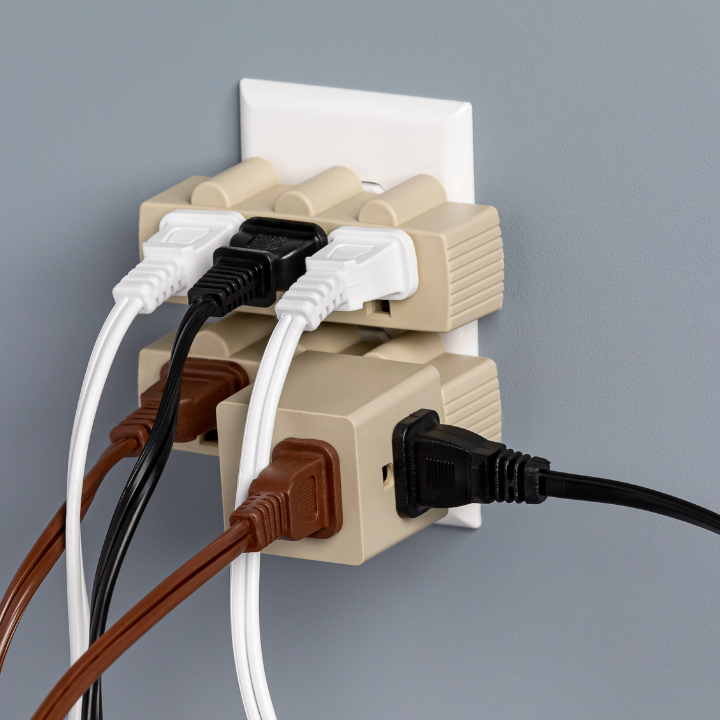
What is a Power Surge?
A power surge is a sudden and brief spike in electrical voltage. This spike can range from a few volts to thousands of volts, overwhelming your home’s electrical system. While some power surges go unnoticed, repeated surges can degrade electrical components over time, leading to repairs or replacements.
5 Common Causes of Power Surges in Lincoln, NE
Understanding the causes of power surges can help you take proactive steps to protect your home. Here are the top five reasons power surges happen in the Lincoln area:
1. Power Outages
Lincoln experiences frequent power outages, especially during severe storms and extreme weather. When power is restored, the sudden influx of electricity can send a strong surge through your home’s wiring. To prevent damage, unplugging devices during an outage is recommended.
2. Lightning Strikes
Nebraska ranks among the top states for lightning strikes per year. A direct or nearby lightning strike can send an intense electrical surge through power lines, affecting everything plugged into your outlets. During a thunderstorm, it’s wise to unplug high-value electronics like televisions, gaming consoles, and computers to prevent damage.
3. Faulty or Aging Wiring
Many homes in Lincoln, especially those in historic neighborhoods like Near South or Country Club, have older wiring that may not be up to modern electrical standards. Outdated or damaged wiring struggles to handle current demands and can contribute to power surges. If you experience flickering lights or frequently tripped breakers, it’s time to have your wiring inspected by a licensed Lincoln electrician.
4. Overloaded Circuits and Outlets
With Lincoln’s growing home office and remote work trends, many residents rely heavily on power strips and extension cords. Plugging too many high-powered devices into a single circuit can overload your electrical system, leading to a surge. Distributing devices across different circuits and using surge protectors can help reduce the risk.
5. High-Powered Electrical Devices Cycling On and Off
Large appliances like refrigerators, air conditioners, and washing machines require significant power to operate. When these devices turn on and off, they create minor power fluctuations that, over time, can contribute to electrical surges. Since Lincoln summers can be hot and humid, air conditioning units work overtime, increasing the risk of fluctuations. Using dedicated circuits and installing surge protectors can help regulate these power spikes.
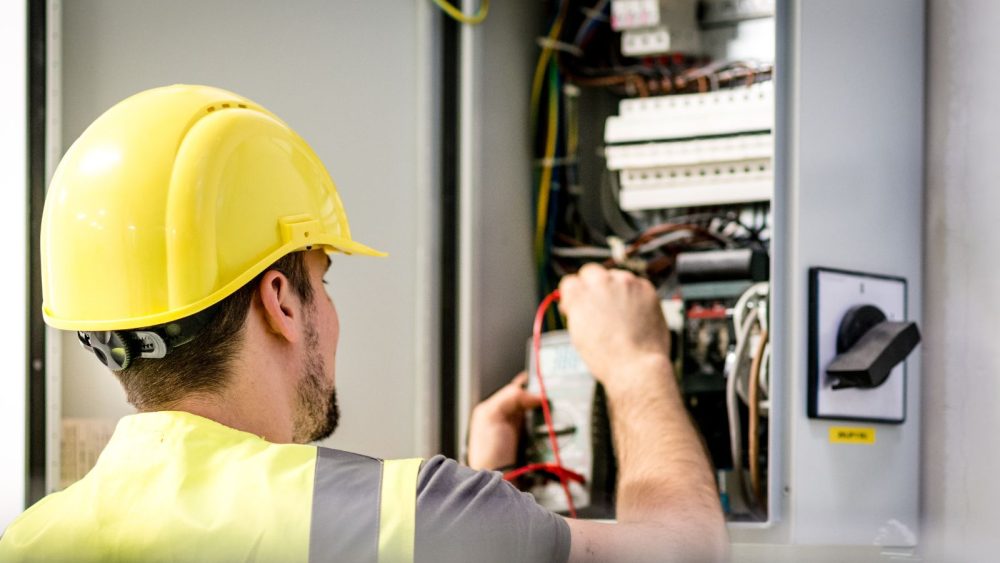
How to Protect Your Lincoln Home from Power Surges
Investing in power surge protection is the best way to safeguard your home from unexpected electrical spikes. Here are some essential tips:
- Use Surge Protectors: Plug sensitive electronics into surge protectors instead of directly into the wall.
- Install a Whole-Home Surge Protector: This device is installed at your electrical panel and protects your entire home from voltage spikes.
- Schedule an Electrical Inspection: If you suspect faulty wiring, an inspection by a professional Lincoln electrician can help identify and resolve potential issues.
- Unplug Devices During Storms: If a storm is approaching, unplug expensive electronics to prevent potential surge damage.
Get Expert Electrical Protection in Lincoln, NE with Mr. Holland’s Home Services
At Mr. Holland’s Home Services, we specialize in whole-home surge protection for Lincoln homeowners. Our team of skilled electricians can install surge protectors that safeguard your appliances, electronics, and entire electrical system from unexpected surges. We understand the unique electrical challenges faced by Lincoln residents, from summer storms to aging infrastructure.
Call us now at (402) 464-7827 to schedule an appointment with a certified Lincoln, NE electrician!
The cold Nebraska winters can be tough on you and your household, so keeping your heating equipment functional is essential. Your heat pump can provide reliable warmth throughout the coldest months of the year, but you’ll need to follow a few steps to make sure it works properly.
Our team at Star City Heating & Cooling can help. We’ve provided heat pump installations in Lincoln, NE and the surrounding communities for years, so we’re here to show you everything you’ll need to do to keep yours in great shape no matter how cold it gets outside.
See Also: The 2023 Nebraska Heat Pump Buyer’s Guide
DIY Heat Pump Prep
Some of the things your heat pump needs before winter are easy enough to do on your own without specialized tools or knowledge. Here’s a list:
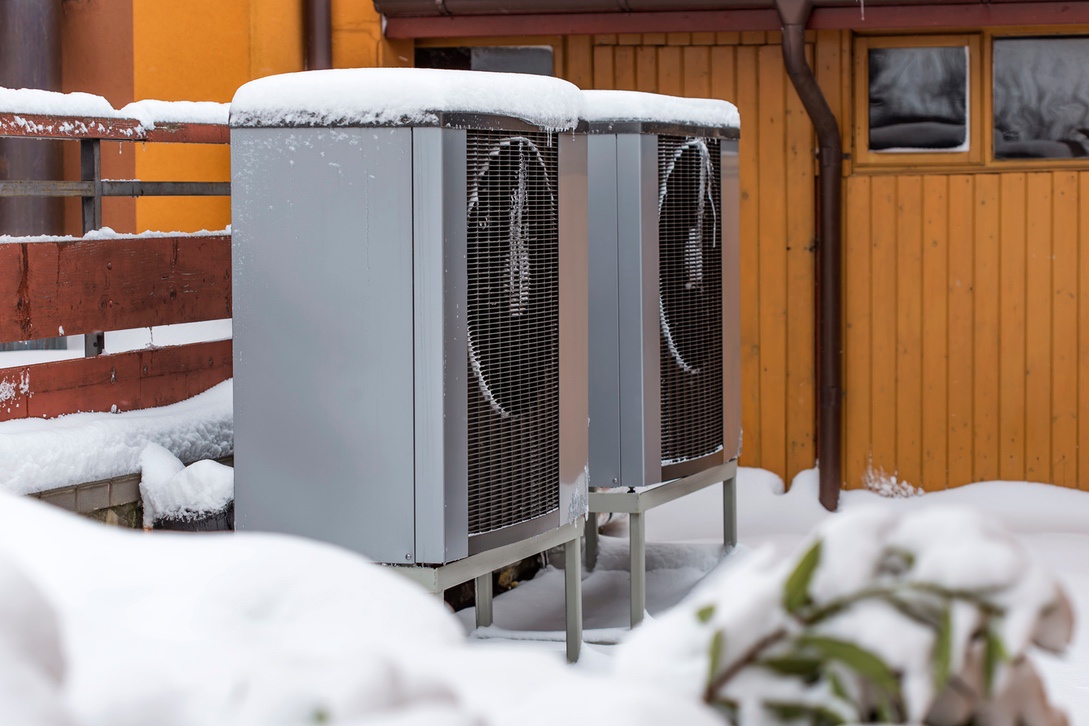
Prepping Your Outdoor Unit
Your heat pump’s outdoor unit plays a critical role in transferring heat into your home. Take these steps to winterize it:
- Clear Debris: Remove leaves, twigs, and other debris from around the outdoor unit—at least two or three feet away. This prevents blockages and maintains airflow efficiency.
- Inspect for Damage: Look for any signs of wear or damage to the unit. Check for rust, loose connections, or damaged pipes.
- Check for Ice or Snow Build-Up: In snowy regions, regularly check the outdoor unit for ice or snow accumulation and gently clear it off.
- Test the Defrost Mode: Ensure the heat pump’s defrost mode is functioning correctly to prevent the buildup of ice during operation.
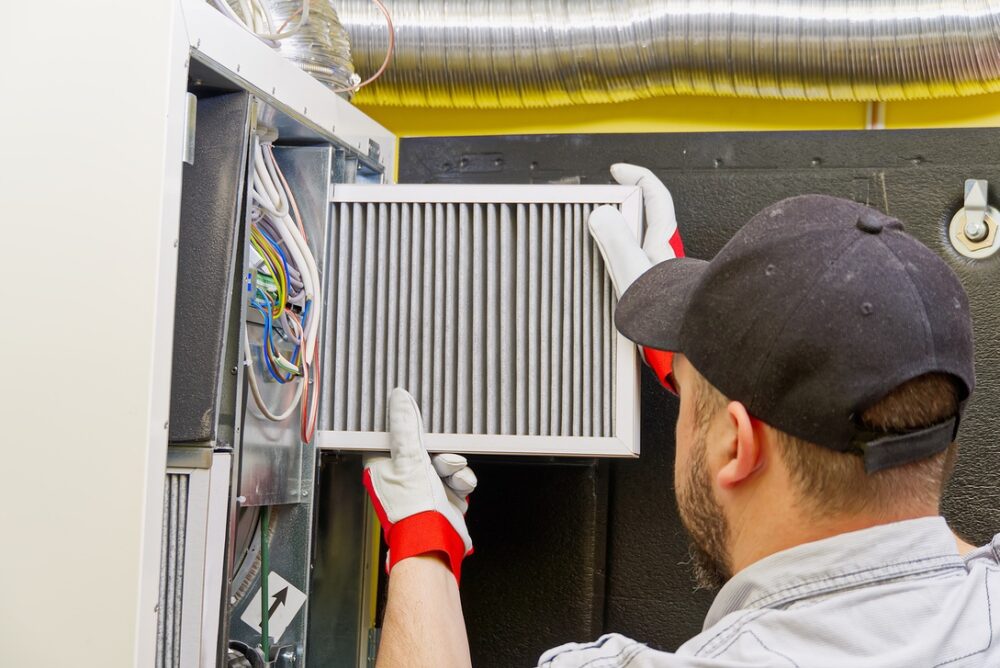
Cleaning or Changing Your Filter
Air source heat pumps have easily replaceable filters, just like forced air furnaces. You’ll want to change the filter in yours at least once every three months during the heating season (and as often as once each month for best results). Here’s how:
- Locate Your Furnace Filter: The filter is usually found inside the indoor unit or the return air vent.
- Check the Filter Type: Determine whether you have a reusable or disposable filter. Reusable filters can be cleaned, while disposable filters must be replaced.
- Inspect and Clean/Replace the Filter: If you have a reusable filter, use a vacuum to remove dust, then rinse it with water. Let it dry completely before putting it back in. If you have a disposable filter, simply replace it with a new one.
- Check the Filter Size: Always use the correct filter size for your heat pump. The required size is usually printed on the side of the filter.
- Install the Filter Correctly: Make sure the filter is installed in the right direction. There should be an arrow on the filter indicating the way the air should move through the filter.
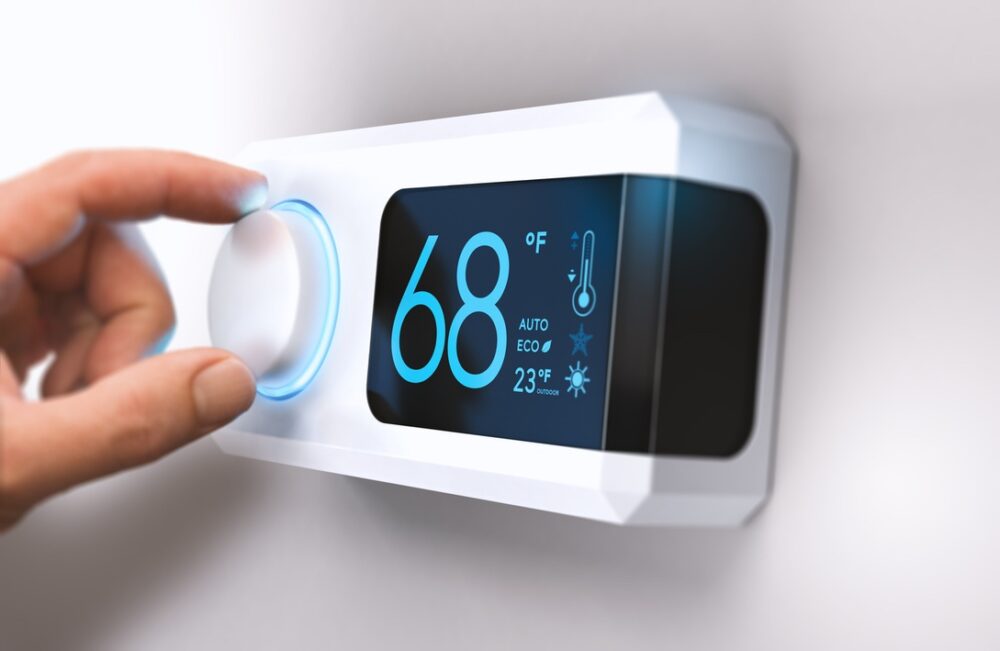
Setting Your Thermostat
Your heat pump is controlled by your thermostat, so take these steps to make sure it’s working properly:
- Check the Batteries: Do this before the heating season (if you have a battery-powered thermostat).
- Use ‘Heat’ Mode: Many thermostats have different modes. Set yours to ‘Heat.’
- Set the Temperature: 68°F (20°C) is a typical daytime setting for most thermostats when people are home. Consider lowering the temperature when away or at night to save energy.
- Consider a Smart Thermostat: Smart thermostats automatically adjust your heat pump to raise or lower the temperature in your home as needed. They can also learn and adapt to your routines, saving energy (and money) over time.
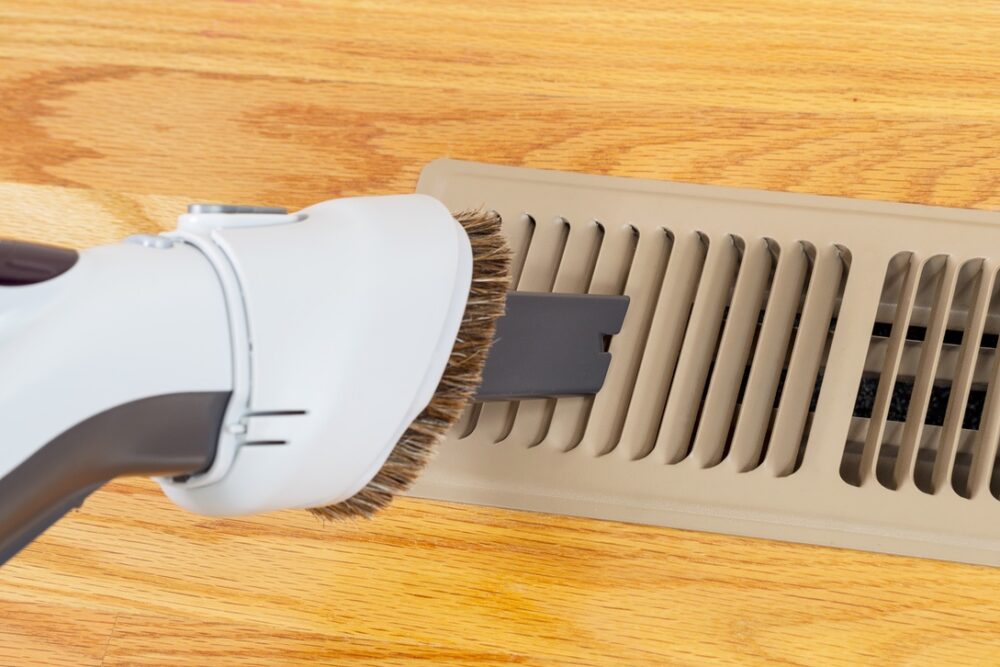
Clearing Your Vents & Registers
Duct cleaning is a professional job, but you can take a few steps to make sure air treated by your heat pump passes through your vents effectively:
- Visually Check Vents: Look at your vents and registers to make sure they’re not dirty or blocked by objects (like furniture or rugs).
- Dust and Clean: Remove any dust or debris you find with a vacuum cleaner.
See Also: The Homeowner’s Guide to Duct Cleaning: Why It Can’t Be Ignored
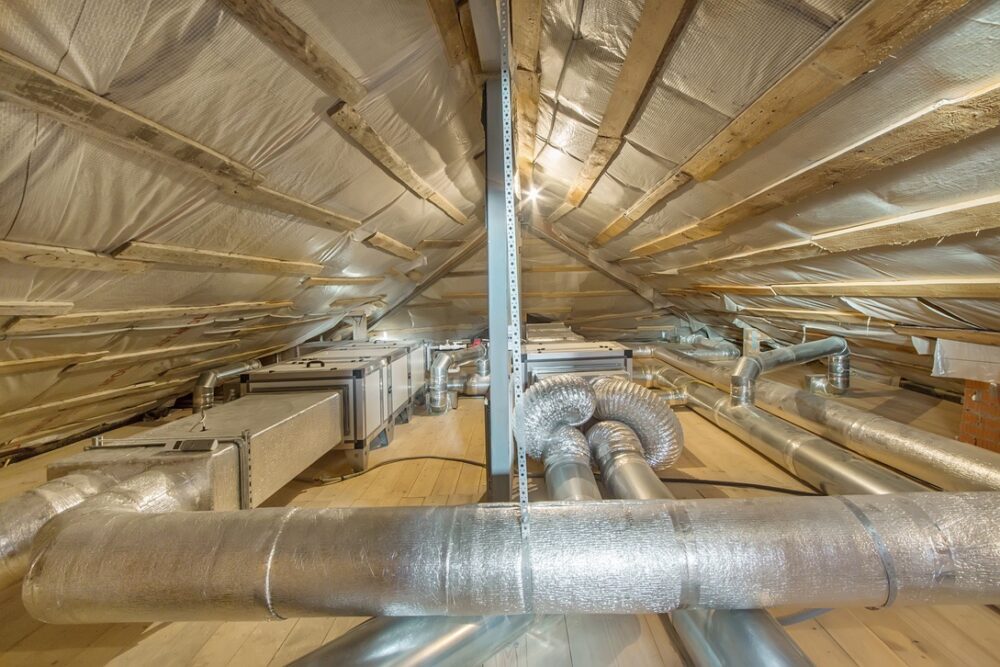
Checking Your Insulation
Your home’s insulation ensures that air treated by your heat pump won’t escape to the outdoors. Here are a few easy things you can do to assess it:
- Seal Windows and Doors: Use weather stripping or caulk to seal any drafts around windows and doors.
- Use Heavy Curtains or Thermal Blinds: These can help keep heat in and cold out.
- Check Attic and Basement Insulation: Look for any obvious gaps that could allow heat to escape from the home in cold weather.
- Look at Your Ductwork: Check visible portions to make sure there are no poorly-insulated sections in unheated areas of the home.
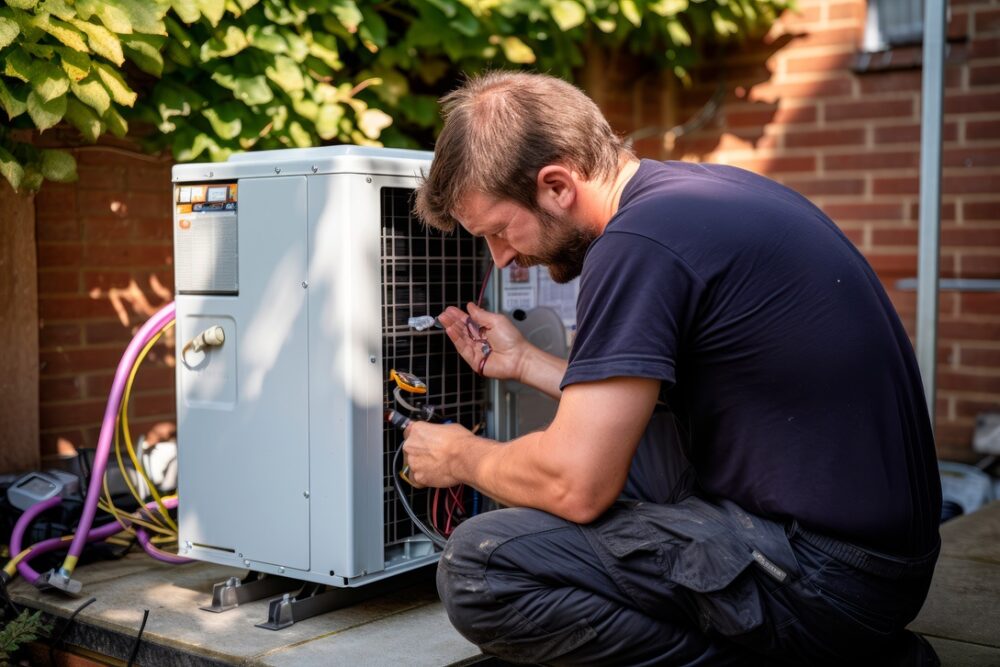
Winter Heat Pump Preparation Tasks for Professionals Only
Some heat pump maintenance should only be carried out by our Star City professionals. Here are a few of the pre-winter tasks we’ll carry out for your heat pump when you have us perform an annual heating tune-up:
Outdoor Unit Tasks
Our team can work with the sensitive components in your outdoor unit to ensure that it performs properly when winter starts. We’ll:
- Straighten the Fins: Carefully straighten any bent fins on the coil. Bent fins can impede airflow and reduce efficiency.
- Ensure Proper Drainage: Check that the area around the heat pump is well-drained. Puddles of water can freeze and cause damage.
- Inspect the Insulation on Refrigerant Lines: Make sure the insulation on the refrigerant lines running to and from the outdoor unit is intact and in good condition.
Indoor Heat Pump Tasks
The indoor unit of your heat pump also contains numerous parts that require an experienced hand. Our team can:
- Check the Safety Controls: Make sure all safety features are functioning properly.
- Inspect the Electrical Connections: Identify and secure loose connections to lower the risk of shocks or fires.
- Inspecting & Cleaning Ductwork: Similar to furnaces, ductwork in all homes with heat pumps should be checked and cleaned for efficiency. Learn more about duct cleaning for Nebraska homes.
- Calibrating the Thermostat: Ensure accuracy and proper placement away from heat sources.
- Lubricating Moving Parts: Use appropriate types and amounts of lubricant for each moving part in your heat pump to reduce wear and tear over time.
Find Your Heat Pump Maintenance Partners in Nebraska
Use the steps above to make your heat pump ready for Nebraska’s harsh winter conditions, and remember to contact Star City for the tasks that need expert assistance. With our help, you’ll be able to depend on your heat pump for versatile climate control throughout the year’s coldest weather—then enjoy reliable cooling once spring and summer arrive.
Winter in Nebraska can be harsh, with temperatures often dropping below freezing. To ensure that your home remains a warm and comfortable sanctuary, it’s crucial to prepare your furnace for the cold months ahead.
Our team at Star City Heating & Cooling is here to guide you through the process. We’ve provided furnace installation, repairs, and routine maintenance to Lincoln, NE and the surrounding communities for years, and we know all about how to make your heating equipment ready for the challenges winter brings.
DIY Winter Furnace Prep
The following tasks are all things you can (and should) do on your own to get your furnace winter-ready.
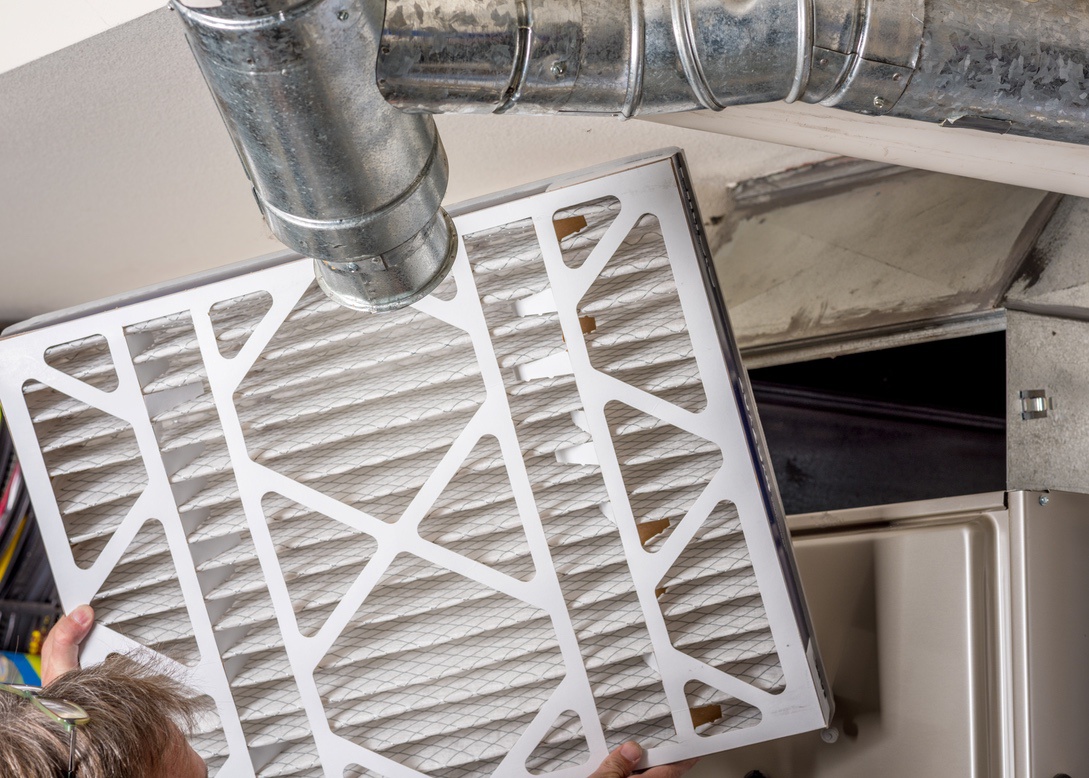
Cleaning or Changing Your Filter
Keeping your furnace filter clean is one of the most important and simplest ways to maintain your system’s efficiency and prolong its life. Here’s how to do it:
- Locate Your Furnace Filter: The filter is usually found inside the furnace or the return air vent.
- Check the Filter Type: Determine whether you have a reusable or disposable filter. Reusable filters can be cleaned, while disposable filters must be replaced.
- Inspect and Clean/Replace the Filter: If you have a reusable filter, use a vacuum to remove dust, and then rinse it with water. Allow it to dry completely before reinstalling. If you have a disposable filter, check its condition. If it’s dirty, replace it with a new one.
- Check the Filter Size: Make sure you’re using the correct size for your furnace when buying and putting in new filters. The required size is usually printed on the side of the filter.
- Install the Filter Correctly: Make sure the filter is installed in the right direction. There should be an arrow on the filter indicating the proper airflow direction.
- Regularly Replace or Clean the Filter: During peak heating season, check the filter every month and replace or clean it as needed.
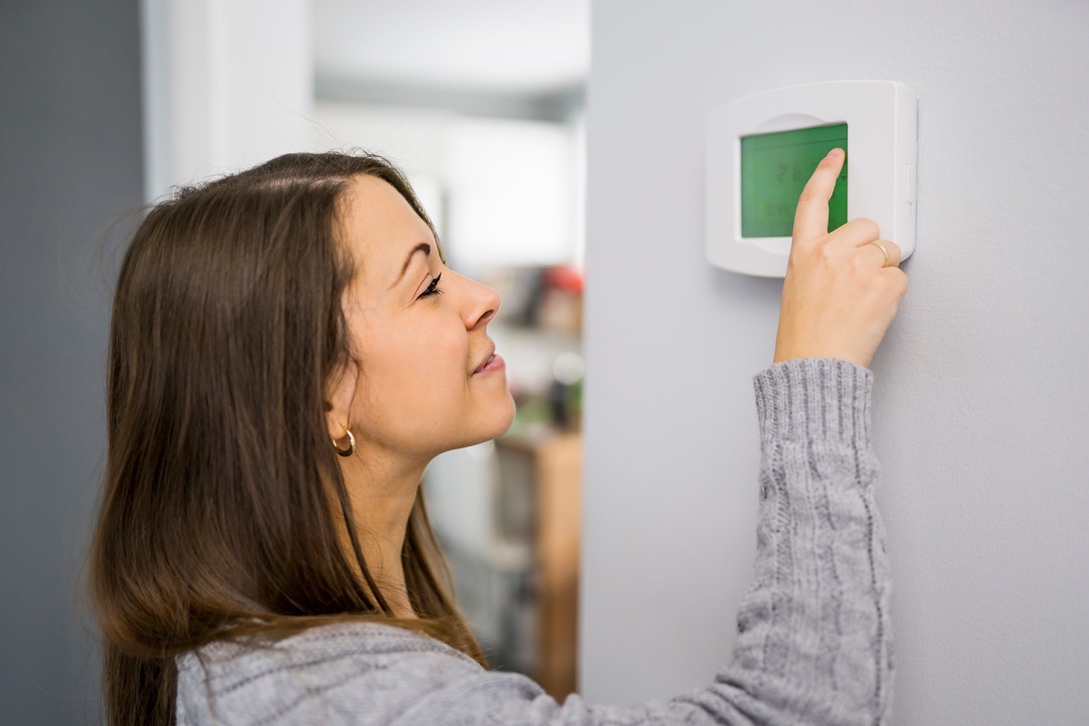
Setting Your Thermostat
Your thermostat plays a vital role in maintaining a comfortable indoor temperature. Here’s how to adjust it:
- Switch to ‘Heat’ Mode: Most thermostats have different modes. Set yours to ‘Heat.’
- Set the Temperature: Choose a comfortable temperature setting. Most people are comfortable at 68°F (20°C) during the day when they’re at home and awake. You can lower it while you’re asleep or away from home.
- Consider a Programmable Thermostat: If you don’t already have one, consider installing a programmable smart thermostat to automatically adjust the temperature based on your schedule.
- Check the Batteries: If your thermostat is battery-operated, make sure the batteries are fresh before the heating season starts.
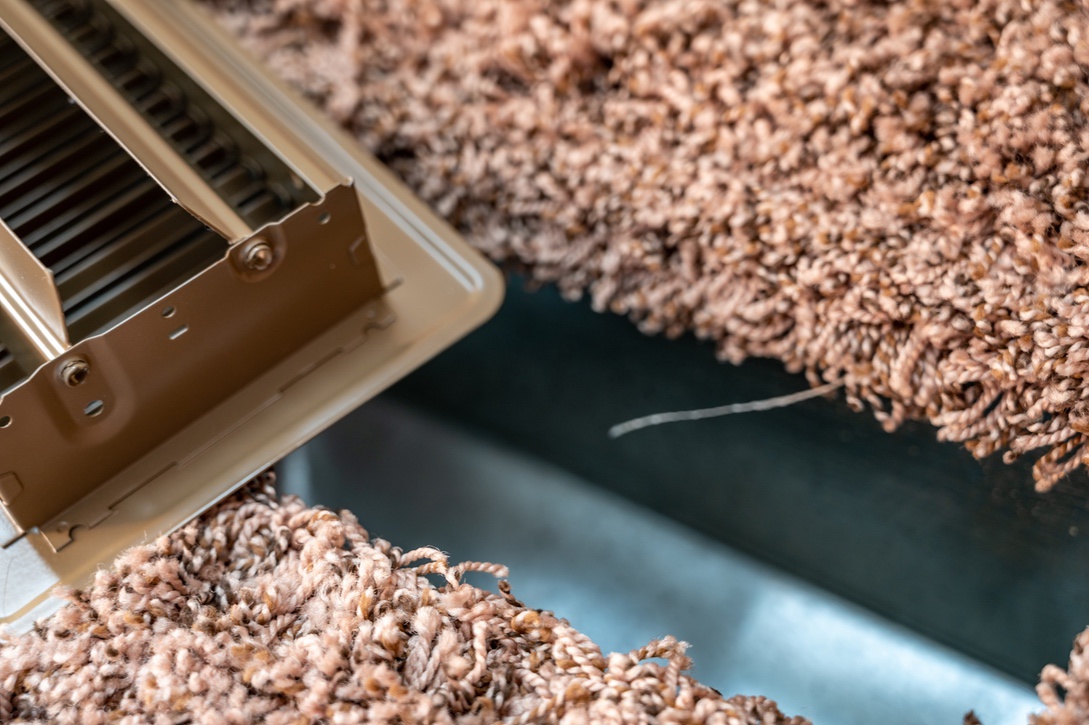
Clearing Your Vents & Registers
Make sure all vents and registers in your home are free of obstructions to ensure proper airflow:
- Inspect All Vents and Registers: Walk through your home and visually inspect each vent and register.
- Remove Obstructions: Ensure that no furniture, curtains, or rugs are blocking the vents.
- Dust and Clean: Use a vacuum cleaner to remove dust from the vents and registers.
Checking Your System Controls
Make sure your furnace’s system controls are working properly:
- Test the System: Turn on your furnace to make sure it starts up and runs properly. Listen for any unusual sounds.
- Check the Thermostat: Ensure that the furnace produces heat and responds to the thermostat’s settings.
- Inspect the Safety Controls: Make sure that the system’s safety controls are functioning properly.
Winter Furnace Prep Tasks for Professionals Only
Not every pre-season furnace maintenance task can be done without help. The following are all important jobs that should only be carried out by our Star City professionals.
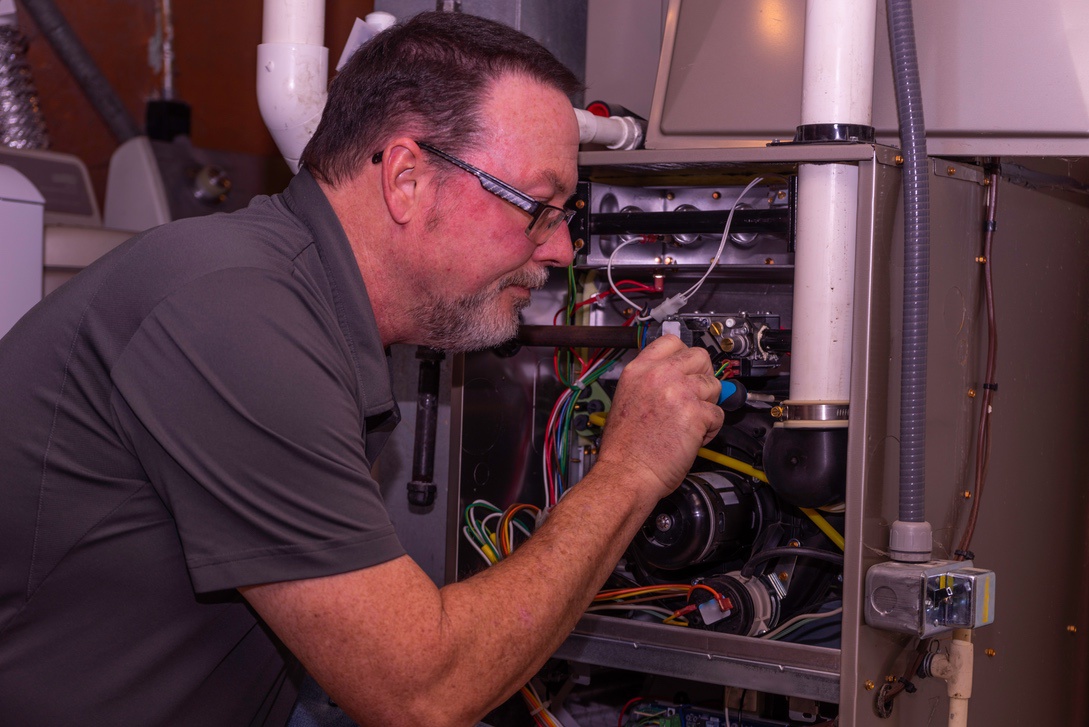
Annual Furnace Tune-Ups
Your furnace is a complex machine with many sensitive components that require professional expertise to clean or adjust. Here’s what our team at Star City will do during a routine furnace tune-up:
- Inspect the Heat Exchanger: Check for any signs of corrosion, cracks, or damage.
- Check the Burners: Ensure they are igniting properly and burning cleanly.
- Examine the Blower Motor: Verify that it’s running efficiently and check its amp draw against the manufacturer’s specifications.
- Test the Ignition System: Make sure it’s working reliably and safely.
- Inspect the Flue Pipe: Look for any blockages, leaks, or signs of corrosion.
- Check the Safety Controls: Ensure all safety mechanisms are in place and functioning properly.
- Inspect the Electrical Connections: Tighten any loose connections and measure the voltage and current on the motor.
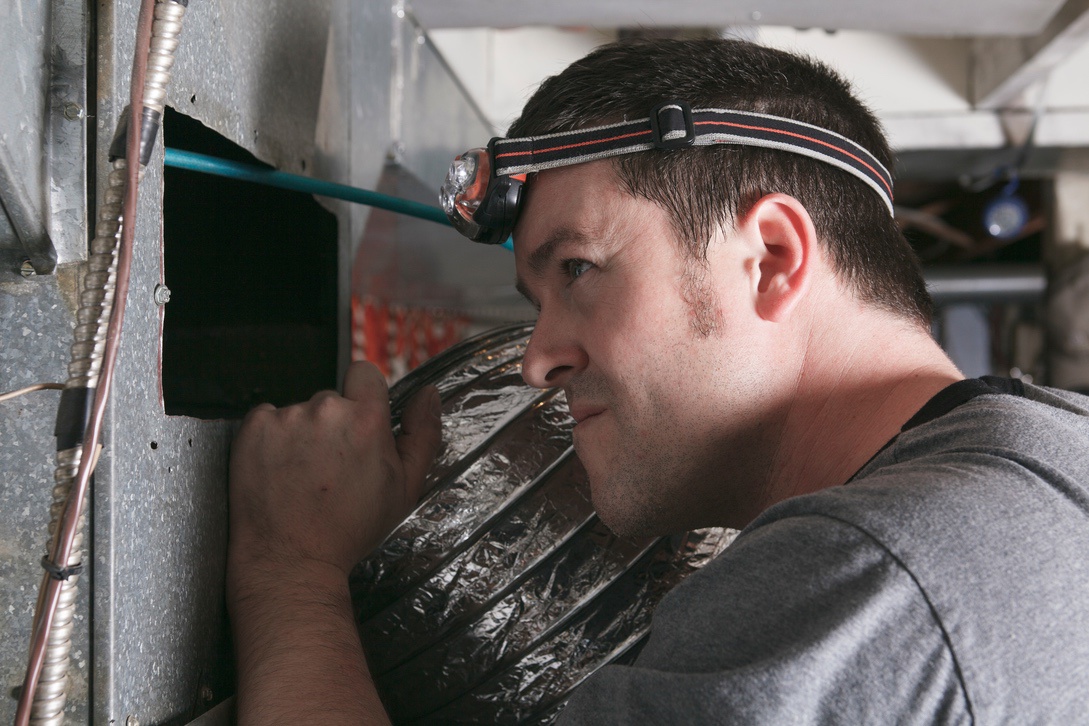
Inspecting & Cleaning Ductwork
Dust and debris can build up in your home’s ductwork over time, which can affect your system’s efficiency and indoor air quality. Here’s what Star City’s technicians will do when you call us for duct cleaning:
- Inspect the Ductwork: Check for any signs of damage, leaks, or blockages.
- Clean the Ducts: Use specialized tools to thoroughly clean the ducts.
- Seal Any Leaks: If any leaks are found, they will be sealed to improve efficiency.
Calibrating the Thermostat
An improperly calibrated thermostat can lead to inefficiency and discomfort. Here’s how our technicians will handle it:
- Test the Thermostat: Check its accuracy and recalibrate it if necessary.
- Ensure Proper Placement: Make sure it’s located away from drafts or heat sources, which can affect its readings.
- Check the Wiring: Ensure all connections are secure.
Lubricating Moving Parts
Parts of your furnace system move constantly when in operation, and they need to be lubricated to prevent wear and tear. Here’s how we’ll help:
- Identify Moving Parts: Locate all moving parts within the furnace system.
- Clean and Lubricate: Clean and apply a suitable lubricant to each moving part to ensure smooth operation.
- Check for Wear and Tear: Inspect the parts for any signs of wear and recommend replacement if necessary.
Let’s Work Together to Prepare Your Furnace for Winter
By following this checklist and contacting us at Star City Heating & Cooling for the tasks that require expert attention, you can ensure that your furnace is ready to keep your home warm and comfortable throughout the winter months in Nebraska.
Remember, regular maintenance not only prolongs the life of your HVAC system but also improves its efficiency and safety. Don’t wait until the cold sets in; prepare your furnace for winter today!
Furnaces can make staying comfortable throughout Nebraska’s changing seasons much easier—since they provide efficient heating capabilities for your home. But getting an efficient furnace means buying one that’s the right size for your home and taking care of it with proper maintenance—so where should you begin?
We’ve installed, repaired, and provided furnace repairs throughout Lincoln, NE—so we know all about what to consider when buying one. Keep reading to find out how furnaces work, how to buy one that will fit your home, what it will cost, and more.
See Also:
How Does a Furnace Work?
Furnaces typically use natural gas, oil, or electricity to heat air, which is then circulated throughout your home via ductwork and dispersed into your room through supply ducts.
How the Heating Cycle Works:
- The thermostat detects a drop in temperature and sends a signal to the furnace.
- The furnace burner ignites the fuel (in gas or oil furnaces) and transfers thermal energy to the heat exchanger. In electric furnaces, a heating element in the heat exchanger warms the air directly.
- The blower motor engages, pushing air across the heat exchanger.
- The warm air travels through the ductwork and is distributed throughout your home.
- The furnace shuts off once the desired temperature is reached.
What to Consider When Buying a Furnace
Replacing your old furnace with a new high-efficiency model can lower the costs of maintaining a comfortable temperature in your home, especially during cold Nebraska winters. But getting the right furnace for your home means considering a few key factors:
Sizing Your Furnace
Any new furnace you purchase should be energy efficient for your space. A furnace’s AFUE, or Annual Fuel Utilization Efficiency, is a measure used to rate its efficiency by dividing the amount of heat output of a furnace by the total energy consumed by the furnace in a year (represented as a percentage).
For example, an AFUE of 90% means that 90% of the fuel’s energy is being converted to heat for your home, while the other 10% escapes as exhaust or remains unburned. The higher the AFUE percentage, the more efficient the furnace is at converting fuel into heat.
In addition to AFUE, accurately sizing a furnace is a complex process that must also account for:
- The square footage of the area in your home that needs heating
- Your home’s R-value (which refers to its insulation, or how easily heat can enter and leave)
- The height of your home’s ceilings
- The number of windows and doors in your home
… and more.
Since sizing a furnace is such a delicate process, it should always be done by one of our professionals. When you ask Star City to install your furnace, your technician will perform a load calculation called the Manual-J to determine your home’s precise heating needs and recommend a furnace that fits.
Frequently Asked Questions about Buying Furnaces in Nebraska
Will a Furnace Provide Enough Heat During Nebraska’s Winters?
Absolutely. Modern high-efficiency furnaces can provide plenty of heat—even during the coldest Nebraska winters. Our furnaces are designed with advanced features that ensure efficient operation and robust heat production.
What Kinds of Furnaces Are There?
There are three major types of furnaces:
- Oil Furnaces: These furnaces are more commonly found in rural regions that do not have access to natural gas lines. They heat homes faster than other types and can sometimes be more cost-effective to run than electric furnaces (depending on utility rates) but more expensive than natural gas models.
- Gas Furnaces: These furnaces offer excellent energy efficiency and relatively low running costs. They usually heat the home faster than electric furnaces but slightly slower than oil models. They’re ideal for homes in towns and cities that already have natural gas lines.
- Electric Furnaces: These furnaces use electric heating elements to heat the air directly. They are often among the most cost-effective models to install up front and can be extremely energy efficient—however, their running costs may still be higher than gas or oil furnaces due to Nebraska’s electricity costs.
How Much Do Furnaces Cost in 2023?
The cost of your new furnace will depend on:
- Its efficiency (AFUE)
- How accessible the installation area is (hard-to-reach places can drive up our time and labor costs)
- Whether your ductwork needs to be upgraded to accommodate your new furnace
- The type of furnace (oil, gas, or electric)
How Long Does Installing a Furnace Take?
Installing a furnace can generally be done in less than one business day, but every home is different. We’ll give you a timeline for your installation when you buy your new furnace from us, based on factors like:
- The type and size of furnace we’re installing
- The condition of your ductwork
- The labor required to access the installation location
We always do our best to provide accurate information on how long installations will take. If we encounter any factors that will increase the length of time required to install your furnace, we’ll tell you ASAP so you can plan ahead.
How Long Will My Furnace Last?
On average, furnaces should last from 15 to 20 years—although they can last up to or over 25 years with proper care. Maintenance, usage habits, and installation quality are all major factors in determining a given furnace’s lifespan.
Always make sure your furnace is serviced by licensed HVAC professionals and follow the recommendations in your owner’s manual to help it last as long as possible.
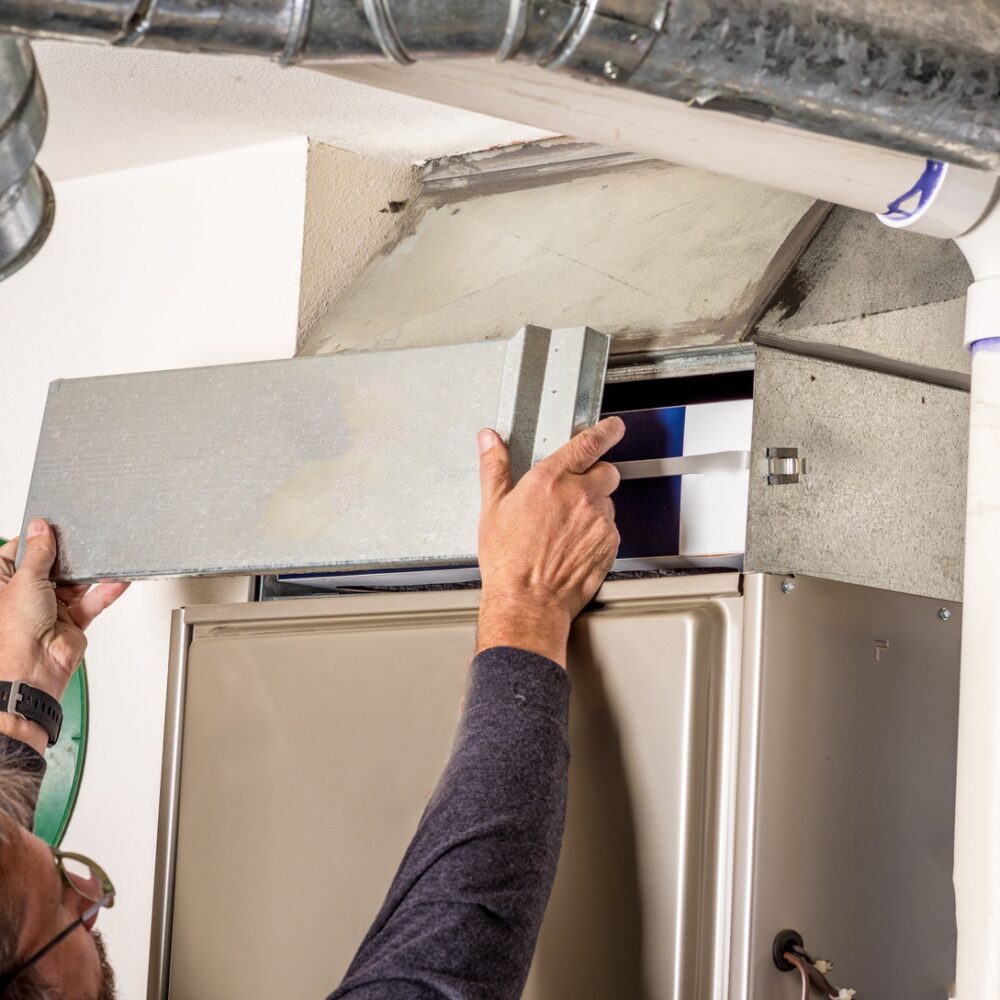
What Maintenance Do Furnaces Need?
There are a few things you can do by yourself to keep your furnace healthy. These include:
- Changing your air filters regularly
- Keeping the area around your furnace clean and unobstructed
- Checking your thermostat to make sure it has power and is set to the right temperature
You should also arrange for annual professional heating tune-ups—usually during the fall, before cold weather arrives. Star City’s heating tune-ups include:
- Checking all gas & electrical connections
- Testing your blower’s performance
- Lubricating all moving parts
- Inspecting and cleaning your furnace’s burner
- Calibrating your thermostat controls
- A comprehensive multi-point safety inspection
Do not attempt to tamper with your furnace’s fuel or electrical components. This can be unsafe and can also void your heating equipment’s warranty. Always call our professionals for help with these tasks.
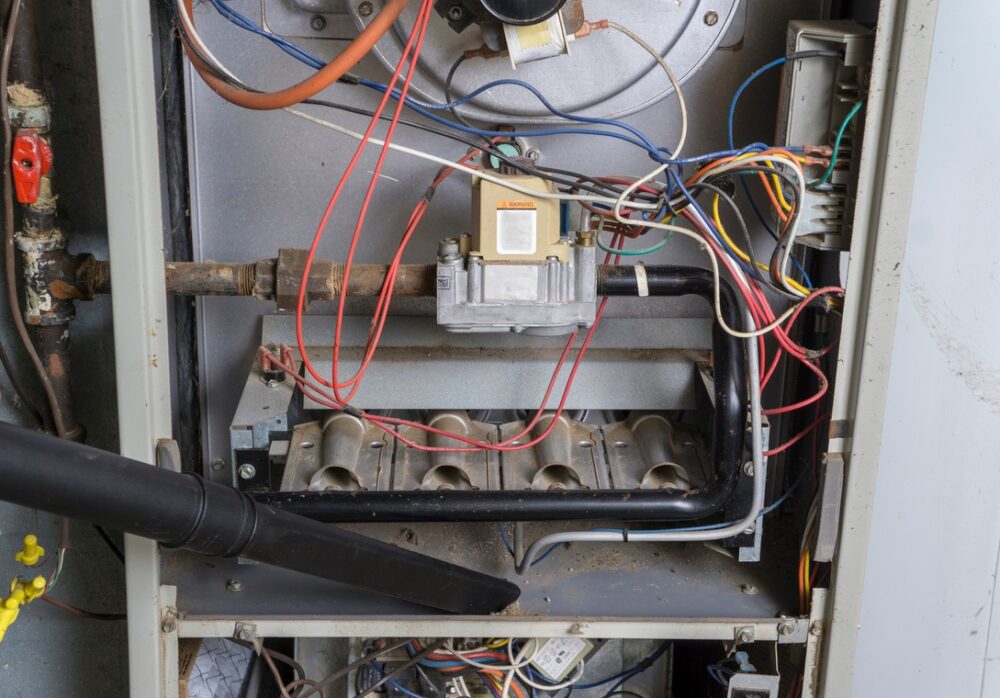
What Are the Signs My Furnace Needs Service?
Signs your furnace might need professional service include:
- Inconsistent or insufficient heating
- Unusual noises or smells coming from the unit
- Rising energy bills (despite no change in usage)
- Frequent cycling on and off
- Yellow or flickering burner flame (this can indicate incomplete combustion in gas furnaces and potentially cause a carbon monoxide leak)
- Inconsistent thermostat readings
If you’re experiencing any of these issues, give us a call right away so that we can diagnose the issue before it becomes worse (and potentially more expensive to fix).
Buying the Right Furnace for Your Nebraska Home
Understanding how furnaces work, what factors affect their efficiency, and the work involved in correctly sizing one for your home will help you purchase a unit you can count on for comfort during Nebraska’s chilly winters. Get recommendations on furnaces that will work for your specific heating needs by contacting Star City Heating & Cooling. We’ll help you choose the best model for your home, provide you with a quote, and answer any additional questions you have.
Heat pumps can make staying comfortable throughout Nebraska’s changing seasons much easier and more cost-effective—since they provide heating and cooling capabilities in a single unit. But getting an efficient heat pump means buying one that’s the right size for your home and taking care of it with proper maintenance—so where should you begin?
We’ve installed, repaired, and serviced heat pumps throughout Lincoln, NE—so we know all about what to consider when buying one. Keep reading to find out how heat pumps work, how to buy one that will fit your home, what it will cost, and more.
See Also:
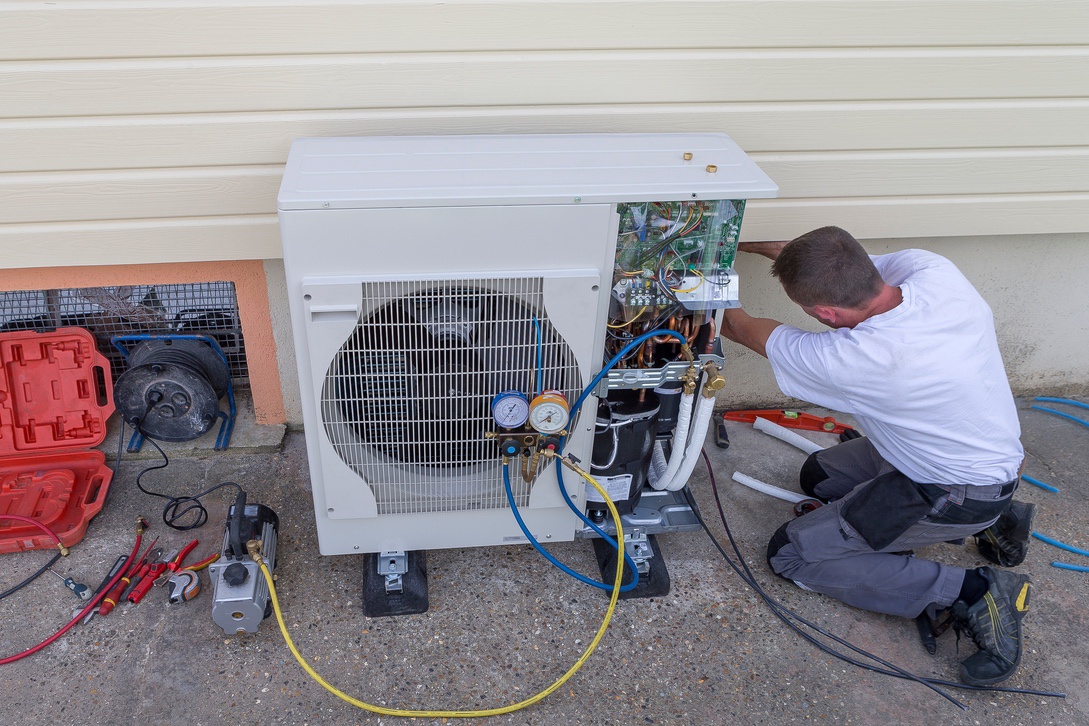
How Does a Heat Pump Work?
Like air conditioners, heat pumps use refrigerant to absorb heat from one area and move it to another location where it can be released.
How the Refrigerant Cycle Works:
- Refrigerant starts out as a gas with low pressure
- When refrigerant enters the compressor, it gets squeezed. As pressure is added, the refrigerant absorbs heat (cooling the air around it)
- Refrigerant moves to the condenser, which releases its heat and converts it to a high-pressure liquid
- The liquid refrigerant moves into the expansion valve, which lowers the pressure and releases even more heat
- The refrigerant is now a cool liquid—when it moves to the evaporator, it absorbs heat from the air again to become a low-pressure gas once more
- The refrigerant re-enters the compressor to start the cycle again
While air conditioners can only absorb heat from the air inside your home and transfer it outside, heat pumps are also designed to absorb heat from outside and move it indoors. Since moving heat uses much less energy than producing it, heat pumps can be extremely efficient, transferring three to four times as much energy in the form of heat than they use in electricity.
What to Consider When Buying a Heat Pump
Investing in a heat pump can be an excellent way to cut down on expenses while keeping your home comfortable, since they’re energy efficient and there’s only one unit to maintain instead of two. But getting the right heat pump for your home means considering a few key factors:
Sizing Your Heat Pump
Just like furnaces and air conditioners, heat pumps have to be sized appropriately for the space you need to heat and cool. Size refers to your heat pump’s heating and cooling capacity, which is measured in BTU (British Thermal Units).
However, BTU is just one indicator of how easily a heat pump can heat or cool your home. Accurately sizing a heat pump is a complex process that must also account for:
- The square footage of the area in your home that needs heating and cooling
- Your home’s R-value (which refers to its insulation, or how easily heat can enter and leave)
- The height of your home’s ceilings
- The number of windows and doors in your home
- … and more
Since sizing a heat pump is such a delicate process, it should always be done by one of our professionals. When you ask Star City to install your heat pump, your technician will perform a load calculation called the Manual-J to determine your home’s precise heating and cooling needs and recommend a heat pump that fits.
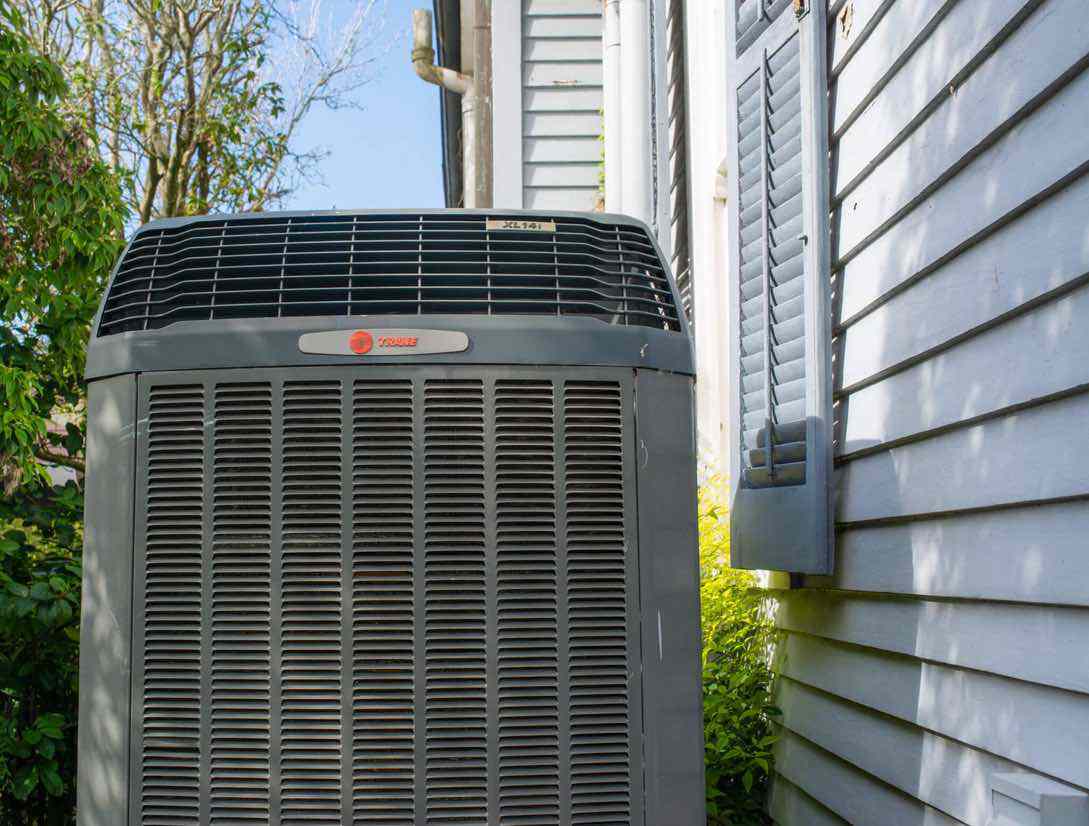
Frequently Asked Questions about Buying Heat Pumps in Nebraska
Will a Heat Pump Provide Enough Heat During Nebraska’s Winters?
While older heat pumps did not always function effectively in extremely cold weather, modern high-efficiency heat pumps can provide plenty of heat—even during the coldest Nebraska winters. Our heat pumps are designed with improved compressors and coils, and use stronger motors to move air through your ducts so that warm air can circulate better in the cold.
What Kinds of Heat Pumps Are There?
- Air-source heat pumps: these heat pumps extract heat from the air outside and use it to heat indoor spaces. Most of the heat pumps we sell are high-efficiency air-source heat pumps that provide satisfactory heating and cooling in every season.
- Ground-source (or geothermal) heat pumps: these heat pumps draw heat from the ground and transfer it indoors. They are typically more expensive than air-source heat pumps.
- Water-source heat pumps: these heat pumps move heat from bodies of water to heat indoor spaces. They are extremely energy efficient but only an option for homeowners who live near lakes, rivers, or the coast.
- Hybrid heat pumps: these heat pumps combine the efficiency of an air-source heat pump with the power of a gas furnace—using gas to supplement the heat pump if the weather ever gets too cold to transfer heat indoors efficiently.
- Ductless mini-split heat pumps: these heat pumps provide individual heating and cooling to specific areas or rooms, without the need for ductwork.
How Much Do Heat Pumps Cost in 2023?
The cost of your new heat pump will depend on:
- It’s size (in BTU)
- How accessible the installation area is (hard-to-reach places can drive up our time and labor costs)
- Whether your ductwork needs to be upgraded to accommodate your new heat pump
- Extra features such as variable-state compressors and backup heating sources (like natural gas for hybrid heat pumps)
How Long Does Installing a Heat Pump Take?
Installing a heat pump can generally be done in less than one business day, but every home is different. We’ll give you a timeline for your installation when you buy your new heat pump from us, based on factors like:
- The type and size of heat pump we’re installing
- The condition of your ductwork
- The labor required to access the installation location
We always do our best to provide accurate information on how long installations will take. If we encounter any factors that will increase the length of time required to install your heat pump, we’ll tell you ASAP so you can plan ahead.
How Long Will My Heat Pump Last?
On average, heat pumps should last from 10 to 15 years—although they can last up to or over 20 years with proper care. Always make sure your heat pump is serviced by licensed HVAC professionals and follow the recommendations in your owner’s manual to help it last as long as possible.
What Maintenance Do Heat Pumps Need?
There are a few things you can do by yourself to keep your heat pump healthy. These include:
- Cleaning or replacing your air filters on a monthly basis (depending on whether they’re disposable or reusable)
- Keeping your outdoor unit clean by clearing away debris and vegetation
- Checking and cleaning the condensate drain
- Checking your thermostat to make sure it has power and is set to the right temperature
You should also arrange for annual professional heating tune-ups—usually during the fall, before cold weather arrives. Our heating tune-ups include:
- Checking all gas & electrical connections
- Testing your blower’s performance
- Lubricating all moving parts
- Checking and cleaning your heat pump’s coils
- Running temperature performance diagnostics
- Calibrating your thermostat controls
- Checking your fan switch & belt
- A comprehensive multi-point safety inspection
What Are the Signs My Heat Pump Needs Service?
Signs your air conditioner might need professional service include:
- Uneven heating or cooling
- Temperature problems
- Unusual noises or smells coming from the unit
- Poor airflow
- Energy bills that steadily increase (despite no change in usage)
- Turning on and off rapidly (cycling)
- Ice buildup on the outdoor unit
- Inconsistent thermostat readings
If you’re experiencing any of these issues, give us a call right away so that we can diagnose the issue before it becomes worse (and potentially more expensive to fix).
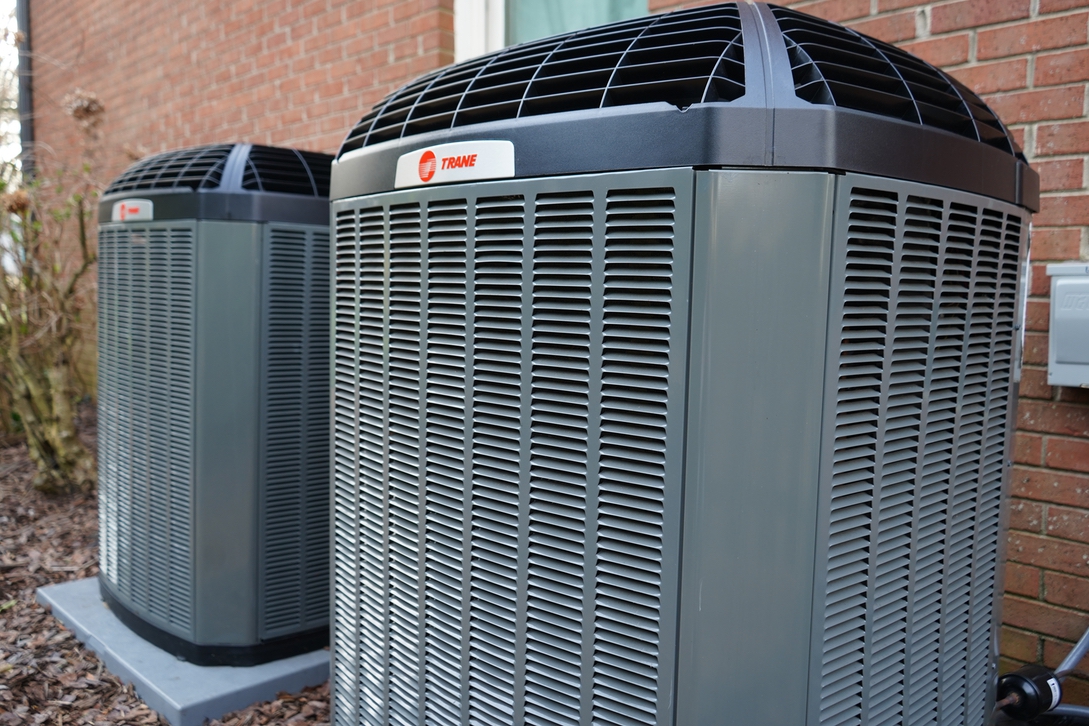
Making the Most of Your Heat Pump in Nebraska
Understanding how heat pumps work, why they’re more efficient than older heating and cooling equipment, and the factors that go into correctly sizing one for your home will help you purchase a unit you can count on for year-round comfort during Nebraska’s warm summers and chilly winters. Get recommendations on heat pumps that will work for your specific comfort needs by contacting Star City Heating & Cooling. We’ll help you choose the best model for your home, provide you with a quote, and answer any additional questions you have.
Buying an air conditioner is an investment you’ll want to make carefully. You should be able to rely on your new cooling equipment to keep you comfortable throughout Nebraska’s hot summers for years to come, so it pays to make sure you get the right size and learn the best way to maintain it.
As home comfort pros who have performed countless AC installations, repairs, and tune-ups throughout Lincoln and the surrounding communities, our team is here to help. Read on to learn more about how air conditioners work, what to consider when purchasing one (including its size), and find answers to frequently asked questions about the process.
See also:
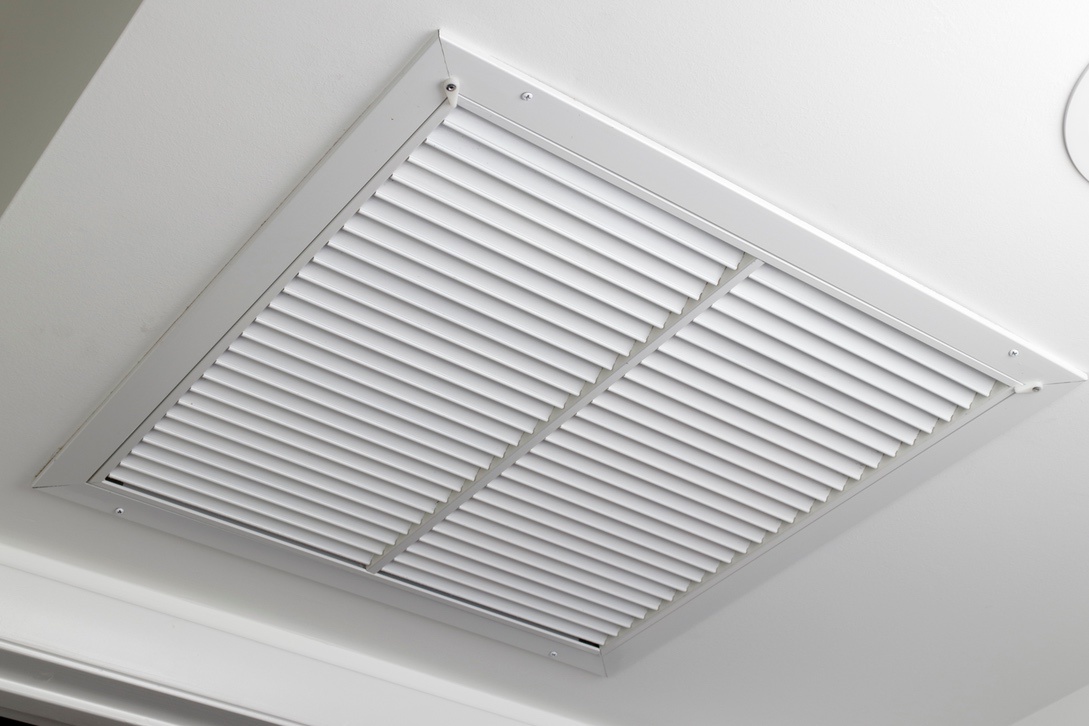
How Does An Air Conditioner Work?
Air conditioners use a chemical called refrigerant to transfer heat out of the air in your home and move it outdoors. We’ve explained the basics below.
The Cooling Cycle Explained:
- Refrigerant enters your AC’s compressor as a low-pressure gas
- The compressor squeezes the refrigerant until it’s pressure and temperature both rise
- The refrigerant enters your AC’s condenser, where it becomes a high-pressure liquid by releasing its heat outside the home
- The liquid refrigerant travels to the expansion valve, where it can release its pressure (this makes its temperature even lower)
- The cool, liquid refrigerant enters the evaporator to absorb heat from your home’s air until it vaporizes and becomes a low-pressure gas again
- The refrigerant then enters the compressor, and the cycle starts fresh
What to Consider When Buying an Air Conditioner
Air conditioners all use the process and components described above, but they can have different capabilities—largely determined by their size and intended application. Buying the right air conditioner for your home lets you enjoy cost-effective comfort whenever the weather turns warm, so it’s important to think about these things up front.
Air Conditioner Size
“Size” refers to your AC’s cooling capacity, and is measured in BTU (British Thermal Units). Broadly speaking, the more BTU your air conditioner produces, the larger the space it can cool efficiently—but there are numerous other factors at play as well, which we’ll cover in the next section.
The best way to know what size of air conditioner your home needs is to call us and let us perform a heat load calculation (also known as a Manual-J). This is an extensive and detailed process that takes a wide variety of factors into account to accurately determine your home’s heating and cooling needs—it’s an essential part of buying a new air conditioner or furnace, and can only be undertaken by qualified professionals like us.
Other Factors that Can Affect Your AC’s Efficiency in Nebraska
Your AC’s size isn’t the only factor that will determine how efficiently it can cool your space. When you call us to recommend an air conditioner that fits your home’s needs, we’ll also take into account things like:
- How much sunlight and shade your property receives
- Your home’s insulation and siding (different kinds can trap heat differently)
- How many windows your home has, what direction they face, and their energy efficiency
- How many heat-generating appliances you have in your home and where they are
Like most of the Midwest, Nebraska has deeply cold winters and particularly hot summers—meaning you might need an air conditioner with slightly more cooling capacity than you would for summers in other states. We’ll help you figure this all out when you call.
Frequently Asked Questions about Buying Air Conditioners in Nebraska
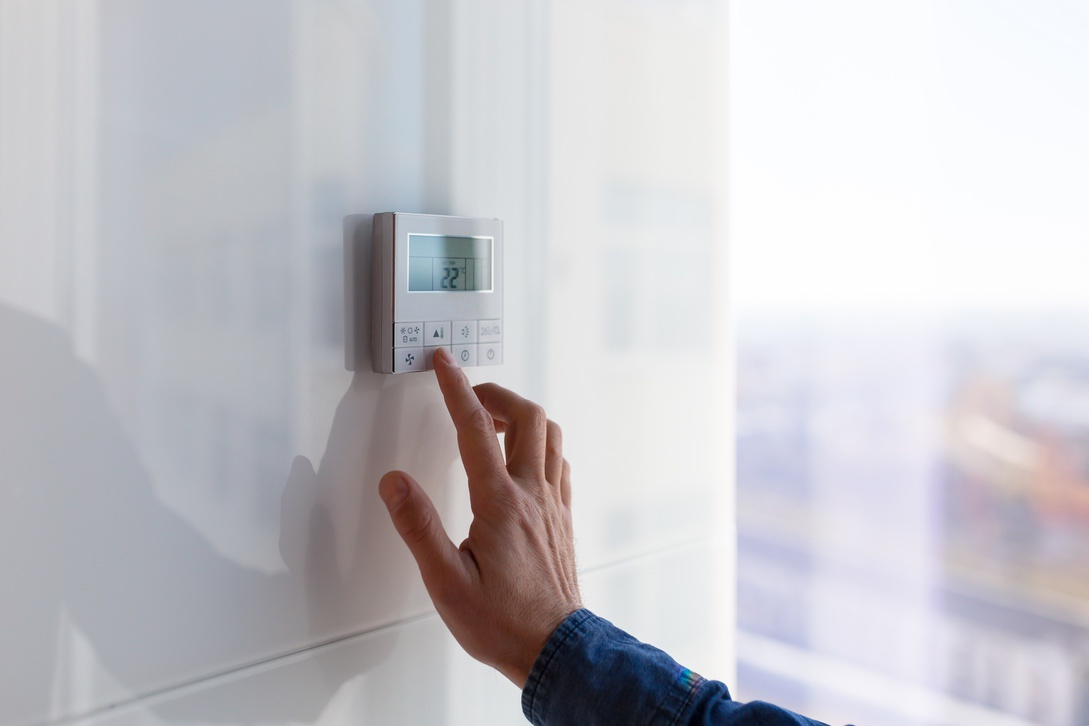
Should I Get Central AC or Ductless Mini Split Systems?
Central AC uses a network of ducts to move cold air throughout your home, while ductless mini split systems are standalone units that usually mount to walls in individual rooms or hallways.
While ductless mini split systems can be an efficient solution in homes that have no ductwork and lack the space to add it, central air conditioning is generally the most cost-effective way to cool an entire home. This is because central AC only requires the purchase of a single unit and can be controlled through a single point (your thermostat) instead of needing to buy and operate multiple different pieces of equipment.
How Much Does a New AC Cost in 2023?
The cost of a new air conditioner in 2023 depends on:
- The air conditioner’s cooling capacity
- How accessible the installation location in your home is
- Whether your ductwork will need to be adjusted or upgraded during the installation
- Any additional features (air handlers, etc.) you are adding to your HVAC system during the installation
How Long Will Installing My New AC Take?
Every AC installation is different because every home is unique. The factors that affect how long your installation takes include:
- What kind of air conditioner we are installing (ductless mini-split or central AC)
- The ductwork that already exists in your home and whether more needs to be added (for central AC systems)
- The accessibility of the area where we’re installing your cooling equipment (cluttered or hard-to-reach places can drive up the time required)
- The model and cooling capacity of your new AC
Our team always strives to provide an accurate quote on how long installations will take, and many new AC installs take under a single business day. If we have reason to think your installation will take longer, we’ll let you know as soon as possible so you can prepare accordingly.
How Long Do Air Conditioners Last?
Most new AC models can be expected to last for 10-15 years, although some may last as long as 20 years with proper maintenance. It’s also important to use your new cooling equipment responsibly and avoid overworking it, especially during extreme temperature conditions. Most AC units are designed to operate efficiently in temperatures between 60°F to 90°F, although this will vary depending on the model.
If you’re concerned about running your AC unit in high temperatures, contact Star City for advice and our team will be happy to help. We also strongly recommend regular maintenance and service for your AC unit to ensure it operates efficiently, no matter what temperature it is outside.
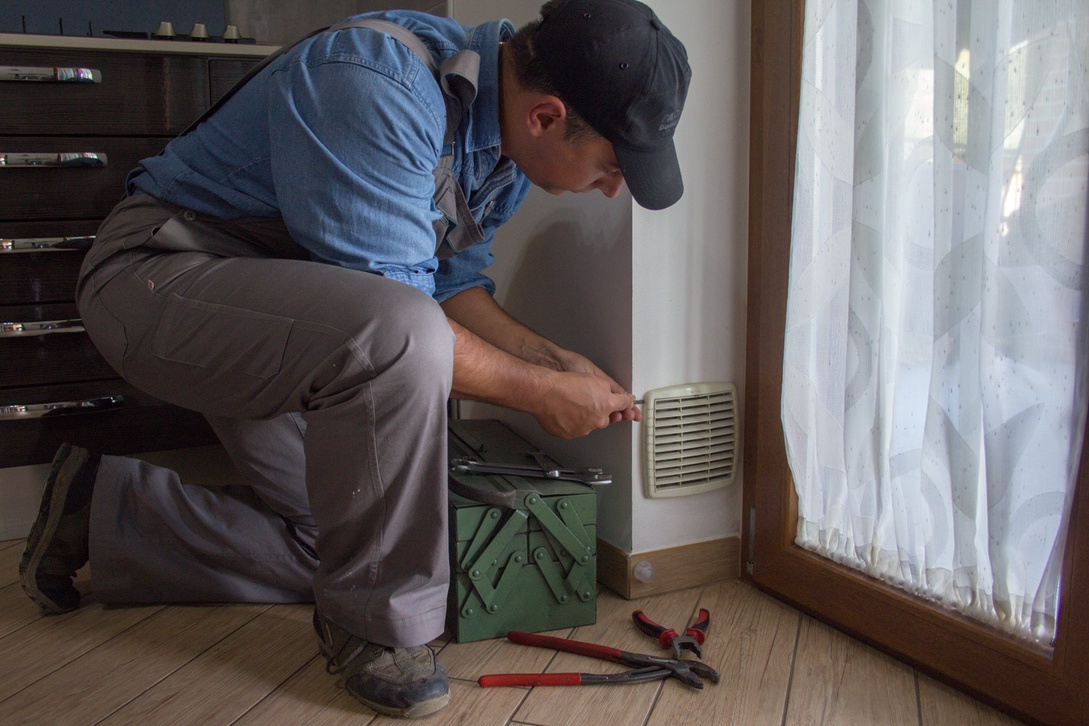
What Maintenance Will I Have to Do on My Air Conditioner?
There’s not much you can do on your own to maintain your AC, short of changing the filter—which you should do every month during the cooling season to avoid efficiency issues. However, Star City provides AC tune-ups in Lincoln, NE that include all the essentials for keeping your AC healthy, like:
- Checking coolant levels
- Evaluating the condenser
- Checking electrical connections
- Testing the blower fan
- Lubricating all moving parts
- Temperature performance diagnostics
- Calibrating the thermostat and controls
- Checking the fan switch
- A comprehensive multi-point safety inspection
Our tune-ups start at just $208 and are the best way to identify signs of AC trouble so you can have them fixed before they become much larger and more expensive problems.
How Do I Know When My AC Needs Service?
Signs your air conditioner might need professional service include:
- Weak airflow
- Unusual sounds or vibrations
- Strange smells coming from the vents
- Water leaks or moisture near the unit
- High humidity levels despite the AC running
- Thermostat not functioning properly
- Steady increase in energy bills despite no change in usage
- Ice buildup on the evaporator coil or refrigerant lines
- Inconsistent or uneven cooling throughout the space
- Turning on and off frequently (short cycling)
Call us for help if you notice any of these issues, or if your AC is more than 10-15 years old and hasn’t been serviced in a long time. We’ll be able to recommend the most cost-effective way to make your home comfortable again.
Finding Trustworthy Service Partners for Your New AC in Nebraska
Use the information above as a starting point for planning the size of air conditioner you might need and preparing to care for it once you purchase it. To learn more about choosing a model that’s exactly right for you and your home’s other occupants, contact Star City Heating & Cooling and speak with a member of our team. We’ll be happy to make a recommendation, provide an accurate estimate, and start planning the best way to keep you cool long-term.
